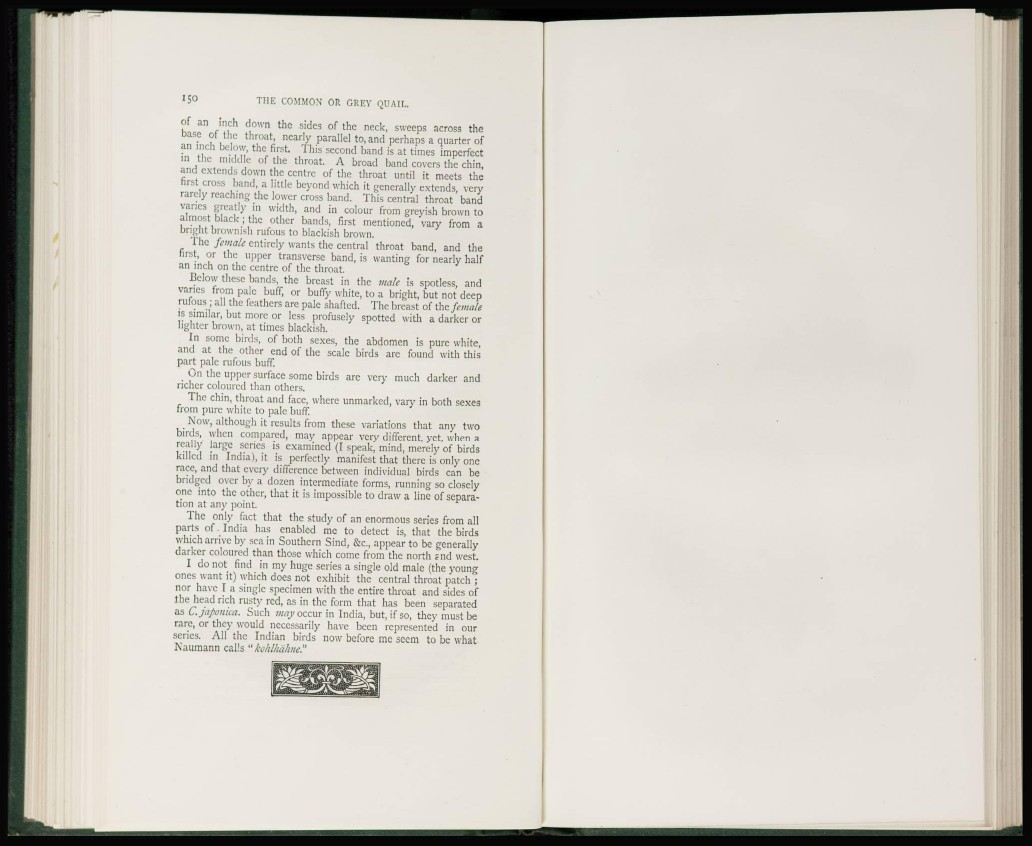
15° THE COMMON OR GREY QUAIL.
of an inch down the sides of the neck, sweeps across the
base of the throat, nearly parallel to, and perhaps a quarter of
an inch below, the first. This second band is at times imperfect
in the middle of the throat. A broad band covers the chin,
and extends down the centre of the throat until it meets the
first cross band, a little beyond which it generally extends, very
rarely reaching the lower cross band. This central throat band
varies greatly in width, and in colour from greyish brown to
almost black; the other bands, first mentioned, vary from a
bright brownish rufous to blackish brown.
The female entirely wants the central throat band, and the
first, or the upper transverse band, is wanting for nearly half
an inch on the centre of the throat.
Below these bands, the breast in the male is spotless, and
varies from pale buff, or buffy white, to a bright, but not deep
rufous ; all the feathers are pale shafted. The breast of the female
is similar, but more or less profusely spotted with a darker or
lighter brown, at times blackish.
In some birds, of both sexes, the abdomen is pure white,
and at the other end of the scale birds are found with this
part pale rufous buff.
On the upper surface some birds are very much darker and
richer coloured than others.
The chin, throat and face, where unmarked, vary in both sexes
from pure white to pale buff.
Now, although it results from these variations that any two
birds, when compared, may appear very different, yet, when a
really' large series is examined (I speak, mind, merely of birds
killed in India), it is perfectly manifest that there is only one
race, and that every difference between individual birds can be
bridged over by a dozen intermediate forms, running so closely
one into the other, that it is impossible to draw a line of separation
at any point.
The only fact that the study of an enormous series from all
parts of India has enabled me to detect is, that the birds
which arrive by sea in Southern Sind, &c, appear to be generally
darker coloured than those which come from the north E nd west.
I do not find in my huge series a single old male (the young
ones want it) which does not exhibit the central throat patch ;
nor have I a single specimen with the entire throat and sides of
the head rich rusty red, as in the form that has been separated
as C. japónica. Such may occur in India, but, if so, they must be
rare, or they would necessarily have been represented in our
series. All the Indian birds now before me seem to be what
Naumann cal's "kohlkahne."